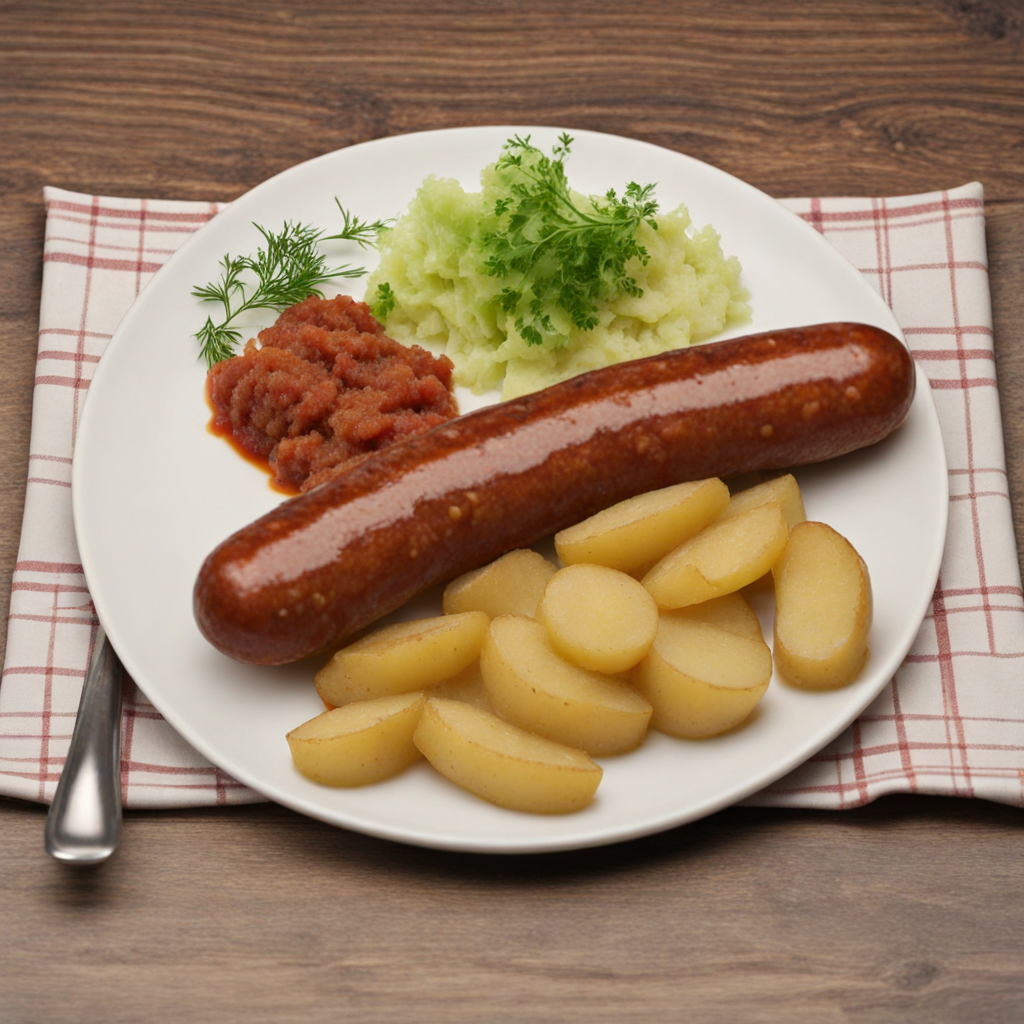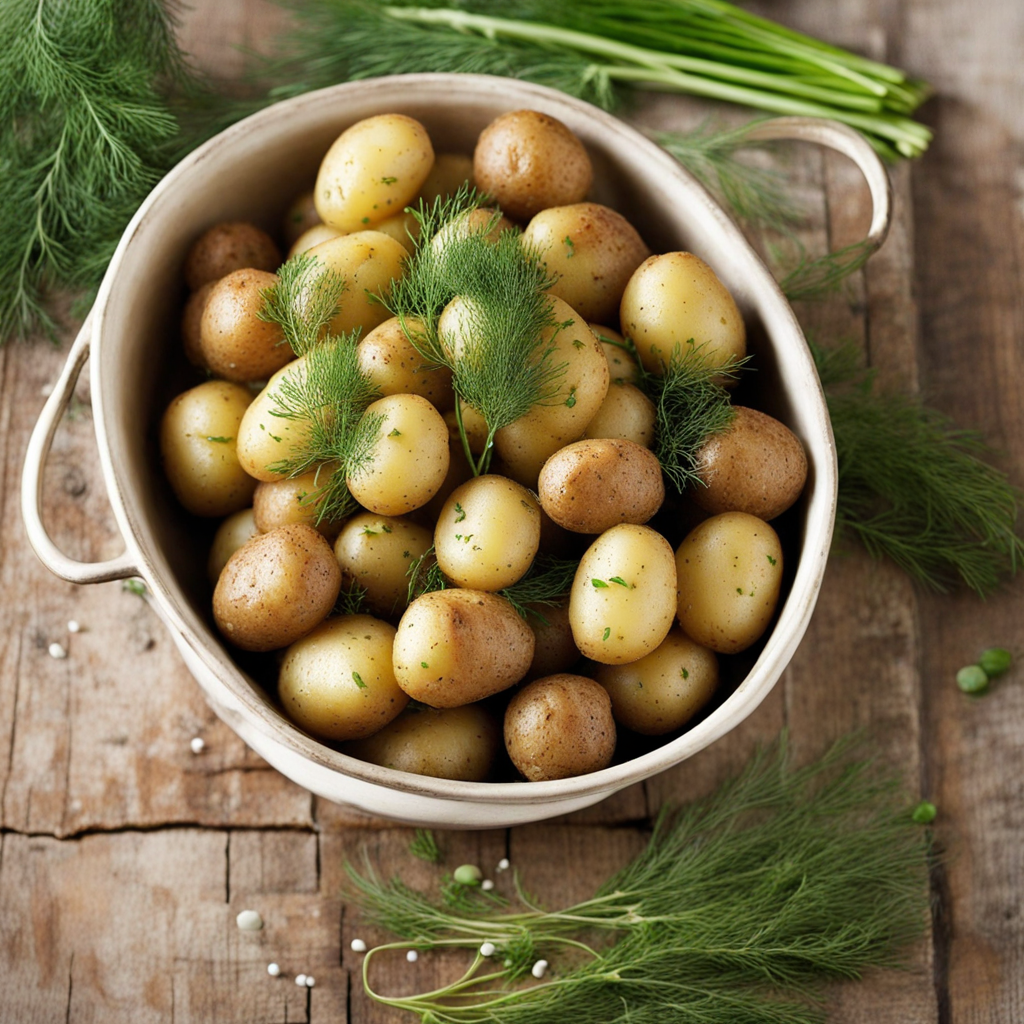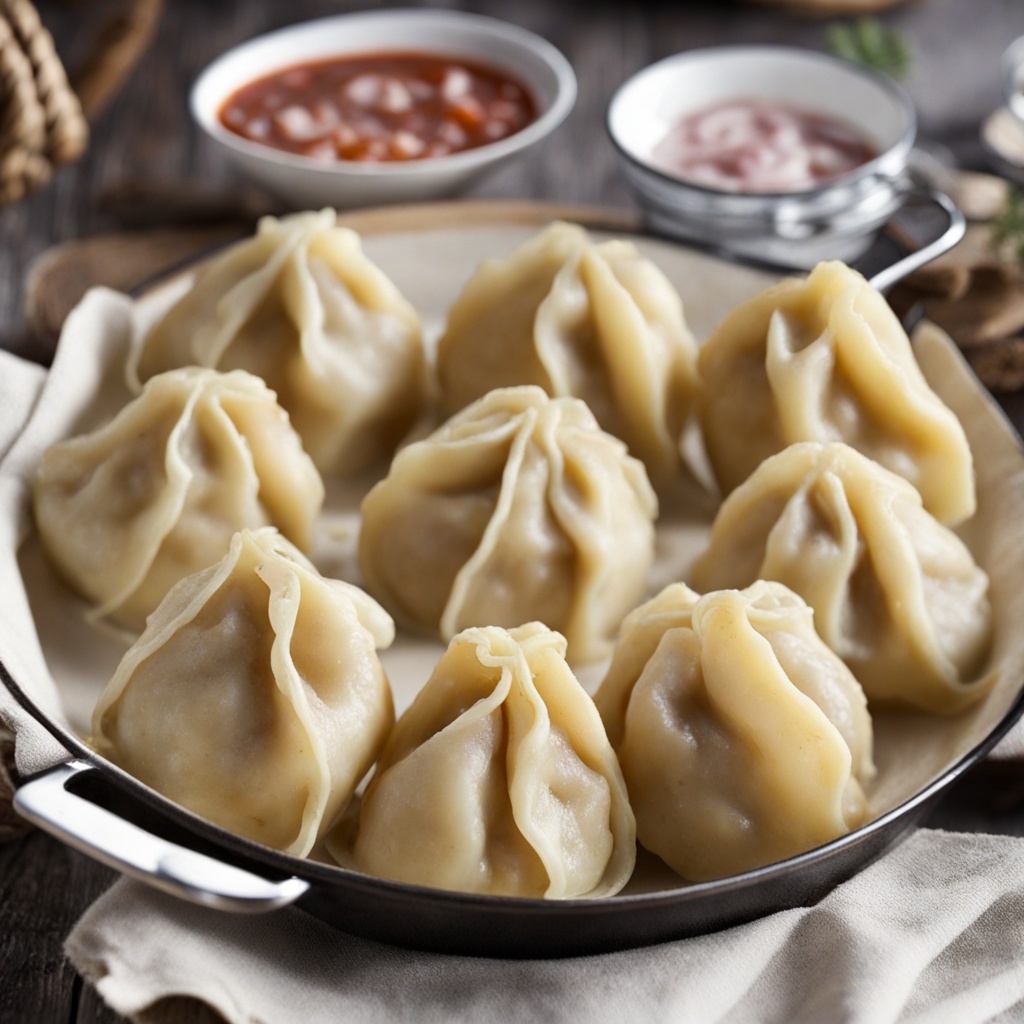Swedish Potato Sausage
Swedish Potato Sausage, known as 'potatis korv', is a distinctive dish that beautifully marries the heartiness of potatoes with the savory flavors of seasoned meat. This traditional sausage is crafted using a blend of finely minced pork, beef, or game meat, combined with grated potatoes that contribute both texture and moisture. The mixture is typically seasoned with spices such as allspice, white pepper, and sometimes a hint of garlic, resulting in a savory profile that is both comforting and aromatic. The sausage is then stuffed into natural casings and cooked, often resulting in a slightly firm yet tender bite that is utterly satisfying.
How It Became This Dish
Potatiskorv: A Journey Through Sweden’s Culinary Heritage Potatiskorv, or potato sausage, is a traditional Swedish dish that embodies the resourcefulness and ingenuity of rural Swedish life. This unique sausage is made primarily from a mixture of grated raw potatoes and ground pork, seasoned with various spices. The history of potatiskorv is deeply intertwined with the agricultural practices, regional customs, and social dynamics of Sweden, making it a remarkable representation of the country's culinary heritage. Origins: A Humble Beginnings The origins of potatiskorv can be traced back to the 19th century when the potato was introduced to Sweden. Originally brought from South America to Europe in the late 16th century, the potato quickly gained popularity in Sweden during the 18th and 19th centuries, particularly as a staple food among the rural population. The introduction of the potato transformed many aspects of Swedish cuisine, allowing for the development of new dishes and preservation methods. Potatiskorv emerged as a practical solution for utilizing the abundant potato harvest in combination with leftover meats. In a time when food scarcity was a pressing concern, especially during harsh winters, resourceful farmers sought ways to maximize their food supplies. The combination of potatoes and pork not only provided sustenance but also made use of every part of the animal, reflecting a philosophy of frugality and respect for resources. Cultural Significance: A Symbol of Community and Tradition In Sweden, potatiskorv is more than just food; it is a cultural artifact that represents community, tradition, and the rural way of life. Each region of Sweden has its own variations of potatiskorv, influenced by local ingredients and family recipes. This regional diversity highlights the ways in which food can bring people together, fostering a sense of identity and belonging. Traditionally, potatiskorv was often made during the winter months, especially around Christmas and festive gatherings. Families would gather to create large batches of the sausage, turning the preparation process into a communal event. This practice not only strengthened familial bonds but also reinforced cultural traditions, with recipes passed down through generations. The act of making potatiskorv often involved storytelling, laughter, and the sharing of memories, transforming a simple cooking task into a cherished ritual. Ingredients and Preparation: A Culinary Craft The primary ingredients of potatiskorv include grated raw potatoes, ground pork, and a blend of spices, which can vary by region. Common spices include salt, pepper, and sometimes allspice or nutmeg, lending the sausage its distinctive flavor. The use of raw potatoes gives potatiskorv a moist texture, while the fat from the pork adds richness. The preparation of potatiskorv is an art form that requires skill and patience. Traditionally, the raw potatoes are grated by hand, a labor-intensive process that emphasizes the importance of craftsmanship in Swedish cooking. Once grated, the potatoes are mixed with ground pork and spices, and the mixture is then stuffed into natural casings, typically made from hog intestines. The sausages are then either boiled, smoked, or dried, depending on the desired flavor and preservation method. Each family or region may have its own preferred method of cooking potatiskorv, and this variability adds to the dish's allure. Some may choose to serve it alongside lingonberries, sauerkraut, or mustard, while others might enjoy it with a side of traditional Swedish flatbread. Regardless of the accompaniments, potatiskorv remains a beloved dish, often central to festive meals and family gatherings. Evolution Over Time: From Necessity to Popularity As Sweden underwent industrialization in the late 19th and early 20th centuries, food production and consumption patterns began to shift. The rise of urban centers meant that many people moved away from rural areas, and traditional practices like making potatiskorv became less common in everyday life. However, the dish did not fade into obscurity; instead, it evolved and adapted to modern times. In the mid-20th century, potatiskorv began to gain recognition beyond rural communities. As traditional Swedish cuisine was celebrated and promoted, potatiskorv found its way into restaurants and culinary festivals, showcasing its rich flavors and cultural significance. The dish became emblematic of Swedish comfort food, appealing to both locals and tourists alike. With the advent of globalization and an increasing interest in artisanal and traditional foods, potatiskorv experienced a renaissance in the 21st century. Chefs and home cooks alike began to experiment with new ingredients and methods, creating innovative variations while still respecting the dish's heritage. This revival has led to a renewed appreciation for potatiskorv as a symbol of Swedish identity, craftsmanship, and the importance of sustainability in food production. Modern-Day Potatiskorv: A Culinary Treasure Today, potatiskorv is celebrated as a beloved dish in Sweden, often featured at traditional food markets, Christmas fairs, and regional festivals. It has become a staple at Midsummer celebrations and holiday feasts, reflecting both nostalgia and contemporary culinary trends. The dish is not only enjoyed for its flavor but also as a reminder of Sweden's agricultural history and the importance of community in food preparation. Moreover, potatiskorv has found its way into the hearts and homes of food enthusiasts around the world. With the rise of interest in Nordic cuisine and the farm-to-table movement, people are increasingly drawn to traditional dishes that embody the ethos of sustainability and local sourcing. Potatiskorv, with its humble ingredients and rich history, serves as a perfect example of how food can connect people to their roots while adapting to modern palates. Conclusion: A Legacy of Flavor and Community Potatiskorv is more than just a traditional sausage; it is a vibrant reflection of Sweden's agricultural past, cultural heritage, and communal spirit. From its origins in the rural kitchens of the 19th century to its place in contemporary Swedish cuisine, potatiskorv tells a story of resilience, creativity, and the enduring importance of food in shaping identity. As it continues to evolve and inspire, potatiskorv remains a cherished culinary treasure, bridging generations and celebrating the rich tapestry of Swedish culture.
You may like
Discover local flavors from Sweden







